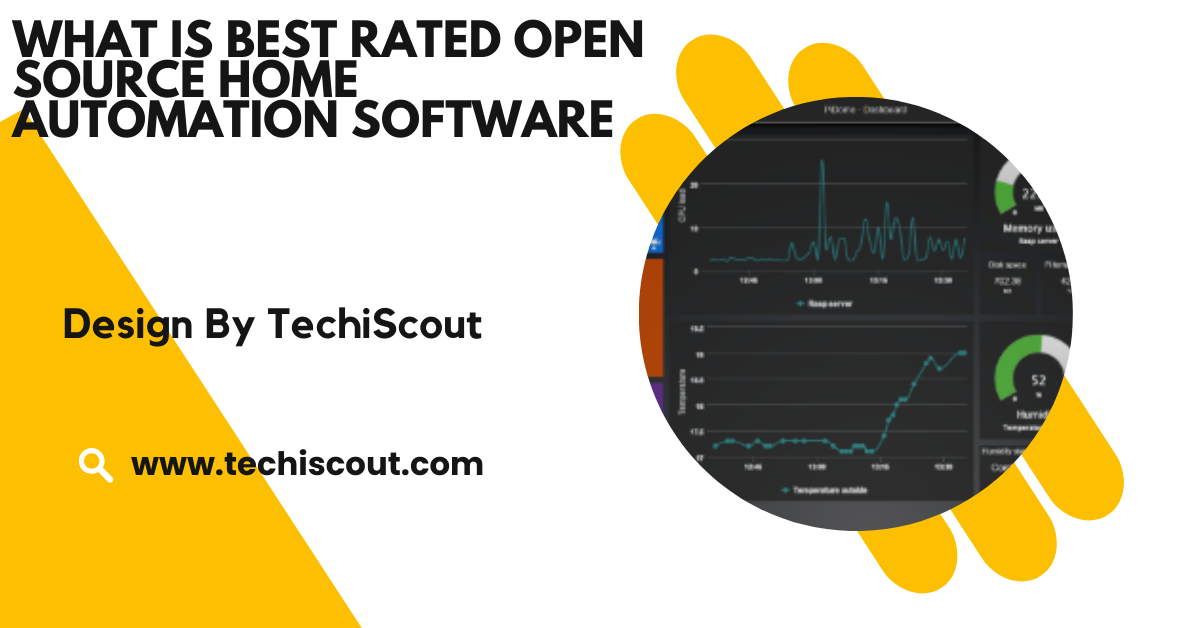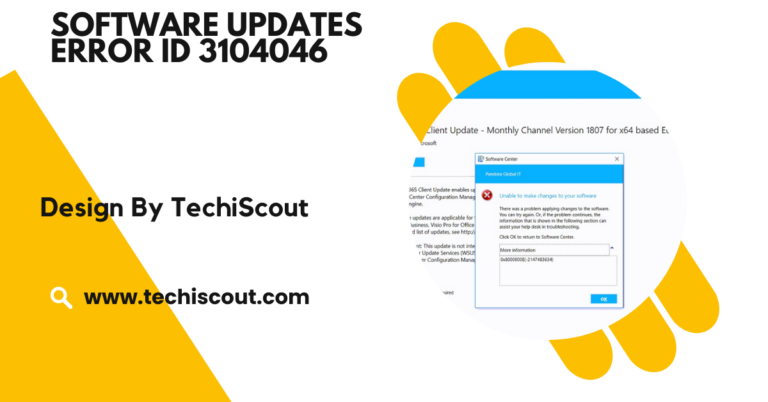What Is Best Rated Open Source Home Automation Software – Explore The Best!
Open-source home automation software offers privacy, cost-efficiency, and flexibility, with options like Home Assistant and OpenHAB.
In this article, we’ll take a deep dive into some of the most highly-rated open-source home automation software and explore what makes them stand out.
Table of Contents
Why Choose Open-Source Home Automation:

Before we dive into specific platforms, it’s important to understand why many users prefer open-source home automation solutions over commercial products:
- Cost-effective: Open-source software is typically free to use, which makes it a budget-friendly choice.
- Privacy and Security: Unlike commercial platforms that may store your data on cloud servers, many open-source solutions allow you to control everything locally, ensuring greater privacy.
- Customizability: Open-source software offers flexibility in terms of customization. Users can modify the code, add new features, or integrate third-party devices without restrictions.
- Active Communities: Open-source projects are often supported by vibrant communities, offering forums, tutorials, plugins, and extensions, making it easier for users to find solutions and share ideas.
With these benefits in mind, let’s look at some of the best-rated open-source home automation software that can turn your house into a smart home.
1. Home Assistant:
Overview:
Home Assistant is one of the most popular open-source home automation platforms, and for good reason. It boasts a massive user base, an active development community, and an impressive range of features that cater to both beginners and advanced users.
Home Assistant is designed to run locally on a Raspberry Pi, PC, or server, providing full control over your home automation setup.
Key Features:
- Extensive Device Compatibility:Home Assistant supports a broad range of smart devices from lights and thermostats to security cameras and speakers, with over 1,000 integrations available.
- Local Control: One of the standout features of Home Assistant is that it runs entirely on your local network, eliminating the need for cloud services. This ensures your data remains private and secure.
- Automation and Scripting:Home Assistant’s powerful automation engine allows users to create customized automation routines based on various triggers, such as time, device state, or sensor input.
- Voice Assistant Integration:Home Assistant integrates seamlessly with popular voice assistants, including Amazon Alexa, Google Assistant, and Apple Siri.
- Custom Dashboards: The platform provides an intuitive, customizable interface to manage your devices. Users can create personalized dashboards for different rooms or areas of their home.
- Community and Support: As one of the most well-supported open-source platforms, Home Assistant boasts a large, active community. Users can find extensive documentation, tutorials, and forums for troubleshooting and advice.
Why it’s rated highly:
Home Assistant’s versatility, continuous updates, and local control make it a top contender for users who value privacy, customization, and scalability. It is ideal for users who want a robust home automation system that can grow with their needs.
2. OpenHAB (Open Home Automation Bus):
Overview:
OpenHAB is another top-rated open-source home automation platform that focuses on providing an integration hub for different smart devices. It is designed to work with a wide range of devices, regardless of manufacturer, by using a uniform interface. OpenHAB is an excellent choice for users with multiple smart home ecosystems that need to be consolidated into a single, cohesive system.
Key Features:
- Wide Device Support: OpenHAB supports an extensive list of devices and services, ranging from lighting systems to security cameras, thermostats, and even smart door locks.
- Cross-Platform Compatibility: OpenHAB works on various operating systems, including Windows, macOS, Linux, and Raspberry Pi, making it a flexible option for users who prefer different platforms.
- Rule Engine and Customization: The platform offers an advanced rule engine that allows users to create highly customized automation workflows, tailored to their specific needs.
- User Interface and Dashboards: OpenHAB provides customizable dashboards to control devices and monitor their status, ensuring a user-friendly experience for homeowners.
- Voice Assistant Integration: OpenHAB integrates with Amazon Alexa, Google Assistant, and other voice control systems for hands-free automation.
- Active Community: The platform benefits from an enthusiastic open-source community that continually contributes to its growth, with a wealth of plugins, bindings, and integrations.
Read Also: Who Should Sign Off Software Design Document Example
Why it’s rated highly:
OpenHAB’s ability to integrate a wide variety of devices, its advanced rule engine for automation, and its active community support make it one of the most powerful open-source home automation platforms. It’s perfect for users who want flexibility and scalability in managing a complex smart home ecosystem.
3. Domoticz:
Overview:
Domoticz is an easy-to-use open-source home automation platform designed to be lightweight, fast, and efficient. It is especially ideal for beginners who want to dip their toes into home automation without a steep learning curve, but it also offers advanced features for more experienced users.
Key Features:
- Device Support: Domoticz supports a variety of smart devices, including sensors, cameras, and switches. It also integrates with popular home automation protocols like Z-Wave and Zigbee.
- Mobile Control: The platform offers a mobile app that allows users to control and monitor their home automation setup remotely, ensuring that you have access to your home no matter where you are.
- Scripting and Automation: While it is beginner-friendly, Domoticz also supports custom scripting and automation through a built-in rule engine, making it flexible enough for advanced users.
- Voice Assistant Integration: Domoticz works with Alexa and Google Assistant, enabling hands-free control of your smart home.
- Lightweight: One of the biggest advantages of Domoticz is its lightweight nature, which allows it to run efficiently on low-power devices like Raspberry Pi.
Why it’s rated highly:
Domoticz is a great option for users who are new to home automation. Its simple interface, easy setup, and scalability make it perfect for users who want to start small and expand their smart home setup as needed.
4. OpenMotics
Overview:
OpenMotics offers a comprehensive, open-source home automation solution that combines both hardware and software components. This platform provides a fully integrated solution for managing various smart devices in your home, from lights to blinds, heating, and security.
Key Features:
- Full Integration: OpenMotics offers both hardware and software for home automation, making it a more complete solution compared to other platforms that are purely software-based.
- Energy Monitoring: OpenMotics includes energy monitoring features that allow users to track their energy consumption and optimize it for greater efficiency.
- Customizable Automation: Like other platforms, OpenMotics supports the creation of personalized automation routines, but it also includes pre-configured automation scenarios for easier setup.
- Scalability: OpenMotics is designed to handle larger setups, making it an ideal choice for users who want to automate their entire home, including lighting, heating, cooling, and security systems.
Why it’s rated highly:
OpenMotics is perfect for users who prefer an all-in-one home automation solution with integrated hardware. Its energy-saving features and scalability make it suitable for larger homes and more advanced setups.
5. Homebridge
Overview:
Homebridge is a popular open-source platform that bridges the gap between non-HomeKit devices and Apple’s HomeKit ecosystem. It allows users to add unsupported devices to HomeKit, enabling them to control them via the Apple Home app and Siri.
Key Features:
- HomeKit Compatibility: Homebridge enables non-HomeKit smart devices to be controlled via Apple’s HomeKit, making it perfect for users who want to expand their Apple ecosystem.
- Extensive Plugins: Homebridge supports a variety of plugins, which makes it easy to integrate new devices without the need for extensive coding.
- User Interface: The platform offers a simple, web-based interface to manage devices and monitor your smart home.
- Voice Integration: Like other platforms, Homebridge allows for voice control through Siri, making it easier to manage your smart home without lifting a finger.
Why it’s rated highly:
Homebridge is an essential tool for Apple users who want to integrate third-party devices into their HomeKit ecosystem. It’s highly regarded for its simplicity, extensive plugin support, and seamless integration with Apple devices.
FAQs:
1.What is home automation software?
Home automation software enables users to control and automate various smart devices in their home, such as lights, thermostats, and security systems.
2.Why should I choose open-source home automation software?
Open-source software is cost-effective, highly customizable, and offers enhanced privacy, as it often operates locally without relying on cloud services.
3.Which open-source home automation software is best?
Home Assistant and OpenHAB are among the best-rated platforms, offering extensive device support, customization, and active communities.
4.Is open-source home automation software easy to set up?
It varies: platforms like Domoticz are beginner-friendly, while Home Assistant and OpenHAB may require more technical knowledge for setup and configuration.
5.Can I integrate Apple devices with open-source software?
Yes, Homebridge allows you to integrate non-HomeKit devices into Apple’s HomeKit ecosystem, enabling control through Siri and the Apple Home app.
Conclusion:
When selecting the best open-source home automation software, the choice comes down to your specific needs and technical expertise. Home Assistant and OpenHAB are two of the most popular and highly-rated options, offering a high degree of flexibility, scalability, and compatibility. Domoticz is perfect for beginners, while OpenMotics provides a hardware-integrated solution for more advanced users.






